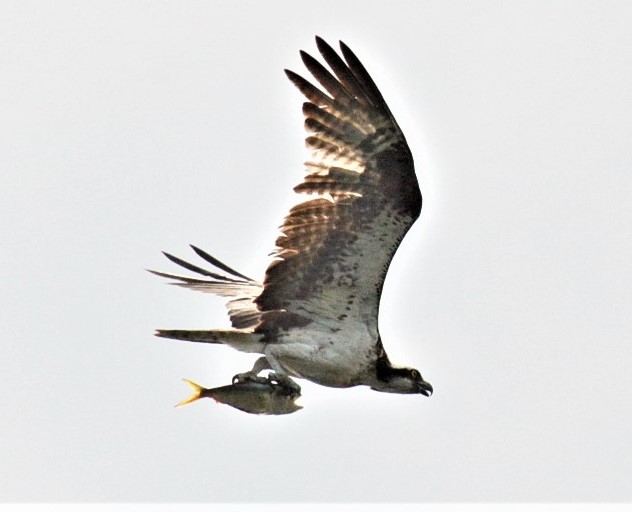When the Ospreys Come Home You Know It's Springtime on the Chesapeake
It’s simply not possible to venture out from any port on the Chesapeake between March and August without getting within a few yards of the ubiquitous osprey nests occupying literally every inhabitable channel day marker on the entire Bay. It’s almost as if the US Coast Guard appointed them to keep watch on the beacons, ensure the posts are still upright, and tally the vessels passing by in each direction. (Note to USCG—if you could train these guys, you’d save a bundle on recruitment advertising… just saying).
If curiosity about these fascinating feathered creatures has gotten the best of you, or if you just want to sound smart among your fellow crew, keep reading. If ignorance is bliss to you when it comes to fun facts about birds of prey, turn the page now. You just got five minutes of your life back.
The fact that you’re still reading says a lot about you, especially since there are between 200 to 400 billion birds on the planet as compared to only five billion humans, according to two scientists who studied this about 10 years ago. The reality is that our Chesapeake Bay ospreys are truly remarkable creatures. Here’s a list of fun, fascinating facts about the birds of prey that outnumber bald eagles on the Bay by a factor of three to one:
Osprey by Numbers
20,000 - Estimated number of osprey on the Chesapeake Bay, representing about 20 percent of the entire osprey population on our planet, according to Center for Conservation Biology. Noodle on that for a minute—the Bay is only about .002 percent of the planet’s surface. Go, Bay!
5000 - The number of miles Chesapeake Bay osprey potentially migrate to every year, as far as the world’s largest tropical wetland area, the Pantanal in Brazil. It would take a month to sail nonstop from Annapolis to Pantanal averaging six knots, 24 hours a day.
500 - The number of miles osprey can fly per day, although the average is closer to 100 per day.
35 - Days until osprey eggs hatch, up to about 45 days.
7 - Minimal average age range, to 10 years and in rare cases 20-25 years.
6 - Wingspan of an adult osprey, in feet.
6 - Number of continents that osprey occupy (sans Antarctica, as the penguins have that pretty well covered).
5.4 - Average number of fish delivered to the nest each day, according to a study by Department of Biology at the College of William and Mary. Medium-sized fish, including perch, shad, and menhaden are the osprey’s culinary preference in the Upper Bay.
5 - Age of osprey’s sexual maturity in the Chesapeake Bay, up to seven years. Osprey can postpone reproduction if there’s a shortage of nesting sites, which is why osprey poles are common.
4 - The number of months they typically spend on the Chesapeake, from April to August every year.
3 - Eggs in a typical osprey nest, ranging from two to four.
2 - Length of adult osprey from beak to tail, in feet
1 - The number of mating partners typically osprey have, as they are monogamous and mate for life.
A few other non-numerical fun facts are sure to impress nearly anyone else on your crew. Here are some of my favorites:
Fisheye view - When fishing, the osprey swoops down to the water to snatch its prey. Not impressed? What if I told you the osprey then rearranges its meal in its talons so the fish faces forward, for improved aerodynamics? See photo as evidence.
A sort of homecoming - Adult osprey instinctively return to nest in the same area where they were born each year. That’s what I call autohelm!
Tie a yellow ribbon - If you’ve ever noticed colored ribbons tied to sticks in osprey nests, that’s no coincidence. Shoreline residents are known to lay twigs out with ribbons attached, to identify when their sticks are used in nest construction nearby.
Undoubtedly, our beloved osprey are truly a part of what makes the Bay wonderful. We should never take them for granted. According to the Chesapeake Bay Program, there are several things we can do to protect our osprey population, including using non-toxic pesticides or chemical-free cleaning products; following safe and legal disposal methods for paint, motor oil, and other household chemicals; and returning unused medicine to a consumer drug return location to keep them from seeping into the Chesapeake Bay watershed.
When you see your first osprey of the season, send a photo to [email protected].
~By Steven Toole





